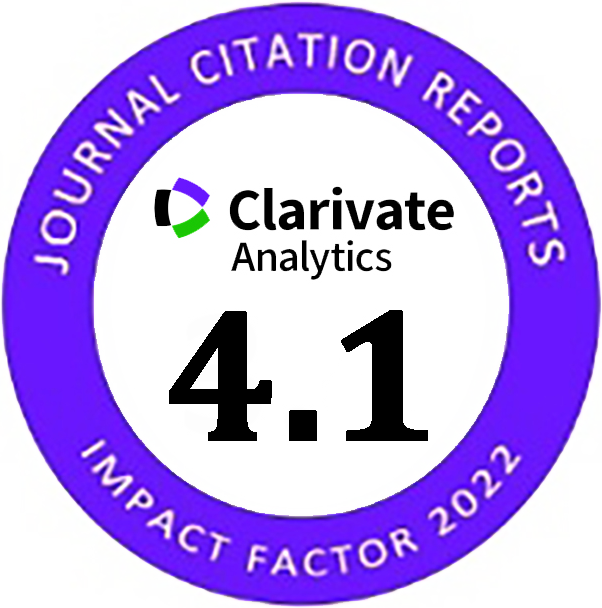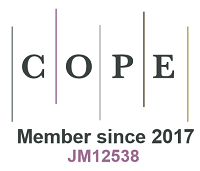Experimental Study on the Structural Behavior of Cast in-situ Hollow Core Concrete Slabs
Abstract
An experimental work has been carried out to study the flexural behavior of cast in-situ hollow core reinforced concrete (HCRC) slabs constructed by using easy, cost effective and implementable techniques in field. The precast elements made of different easily available affordable material i.e. concrete, polyvinyl chloride (PVC) and plaster of paris having voided cross- sections of circular, rectangular and triangular shapes were incorporated in one direction during pouring of concrete with minimum flexural reinforcement to construct HCRC slabs. A total of 14 slab specimens including 02 specimens per specification were tested with third point loading for the assessment of flexural behavior as per ASTM standards C78/C78M. The flexural behavior of HCRC slabs with polyvinyl and plaster of paris elements having hollow cross-sections was comparable with the control solid slabs, however, HCRC slab with concrete pipes showed 7 to 8 percent reduction in flexural strength with 19 to 20 percent reduction in self-weight. All the tested specimens performed well in shear as no shear failure was observed. This study reveals that HCRC slabs with locally available material having hollow cross section elements can be used for the construction of cast in-situ monolithic construction of one-way slabs with ordinary construction techniques.
Doi: 10.28991/cej-2020-03091597
Full Text: PDF
Keywords
References
Xu, Xinhua, Jinghua Yu, Shengwei Wang, and Jinbo Wang. “Research and Application of Active Hollow Core Slabs in Building Systems for Utilizing Low Energy Sources.” Applied Energy 116 (March 2014): 424–435. doi:10.1016/j.apenergy.2013.09.064.
K.M.Monisha and G.Srinivasan “Experimental Behaviour of Prestress Hollow Core Slab, RC Hollow Core Slab and Normal RC Solid Slab” International Research Journal of Engineering and Technology, Volume: 04 Issue: 04 | Apr -2017
Mones, Ryan M., and Sergio F. Breña. “Hollow-Core Slabs with Cast-in-Place Concrete Toppings: A Study of Interfacial Shear Strength.” PCI Journal 58, no. 3 (June 1, 2013): 124–141. doi:10.15554/pcij.06012013.124.141.
Park, Min-Kook, Deuck Hang Lee, Sun-Jin Han, and Kang Su Kim. “Web-Shear Capacity of Thick Precast Prestressed Hollow-Core Slab Units Produced by Extrusion Method.” International Journal of Concrete Structures and Materials 13, no. 1 (January 25, 2019). doi:10.1186/s40069-018-0288-x.
Mhalhal, Jasim Mahmood. “Prestressed Precast Hollow-Core Slabs with Different Shear Span to Effective Depth Ratio.” Wasit Journal of Engineering Sciences 5, no. 2 (October 11, 2017): 1–11. doi:10.31185/ejuow.vol5.iss2.53.
L.J. woods, D.K. Bull and R.C. Fenwick “Seismic Performance of Hollow-core Flooring: the Significance of Negative Bending Moments” The 14th World Conference on Earthquake Engineering October 12-17, (2008), Beijing, China.
Wariyatno, Nanang Gunawan, Yanuar Haryanto, and Gathot Heri Sudibyo. “Flexural Behavior of Precast Hollow Core Slab Using PVC Pipe and Styrofoam with Different Reinforcement.” Procedia Engineering 171 (2017): 909–916. doi:10.1016/j.proeng.2017.01.388.
Venanzi, I., M. Breccolotti, A. D’Alessandro, and A.L. Materazzi. “Fire Performance Assessment of HPLWC Hollow Core Slabs through Full-Scale Furnace Testing.” Fire Safety Journal 69 (October 2014): 12–22. doi:10.1016/j.firesaf.2014.07.004.
Numan, Hesham A., Waleed A. Waryosh, and Shaima Sabri Ali. “Behavior of Laminated Reinforced Concrete Curved Beam with Changing Concrete Properties.” Civil Engineering Journal 5, no. 2 (February 27, 2019): 284. doi:10.28991/cej-2019-03091244.
Broo, H., K. Lundgren, and B. Engström. “Shear and Torsion Interaction in Prestressed Hollow Core Units.” Magazine of Concrete Research 57, no. 9 (November 2005): 521–533. doi:10.1680/macr.2005.57.9.521.
ACI Committee 301, “Review of Building Code Requirements for Structural Concrete (ACI 318-95) and Commentary (ACI 318R-95) by ACI Committee 318.” Journal of Architectural Engineering 2, no. 3 (September 1996): 120–120. doi:10.1061/(asce)1076-0431(1996)2:3(120.3).
Manikandan, S., S. Dharmar, and S. Robertravi. "Experimental study on flexural behaviour of reinforced concrete hollow core sandwich beams." International Journal of Advance Research in Science and Engineering 4, no. 01 (March 2015).
Joris H.H. Fellinger “Shear and Anchorage Behaviour of Fire Exposed Hollow Core Slabs” Ph.D. thesis, Delft University Press PO Box 98, 2600 MG Delft the Netherlands.
Etman, Emad El-Sayed. “Innovative Hybrid Reinforcement for Flexural Members.” Journal of Composites for Construction 15, no. 1 (February 2011): 2–8. doi:10.1061/(ASCE)cc.1943-5614.0000145.
Prusty, Jnyanendra Kumar, Sanjaya Kumar Patro, and Tribikram Mohanty. “Structural Behaviour of Reinforced Concrete Beams Made with Ferrochrome Slag as Coarse Aggregate.” KSCE Journal of Civil Engineering 22, no. 2 (April 25, 2017): 696–707. doi:10.1007/s12205-017-1294-2.
Turker, Kaan, Umut Hasgul, Tamer Birol, Altug Yavas, and Halit Yazici. “Hybrid Fiber Use on Flexural Behavior of Ultra High Performance Fiber Reinforced Concrete Beams.” Composite Structures 229 (December 2019): 111400. doi:10.1016/j.compstruct.2019.111400.
Rajeshwaran R, Yamini V, Nivedha DGS and Madhu Bala AM. “Experimental Evaluation of Concrete Slab Using Hollow Steel Pipes” Civil Engineering Research Journal 5(4): CERJ.MS.ID.555670 (2018). doi:10.19080/CERJ.2018.05.555670.
Ashour, Samir A, Faisal F Wafa, and Mohmd I Kamal. “Effect of the Concrete Compressive Strength and Tensile Reinforcement Ratio on the Flexural Behavior of Fibrous Concrete Beams.” Engineering Structures 22, no. 9 (September 2000): 1145–1158. doi:10.1016/s0141-0296(99)00052-8.
Rashid, M.A. Mansur, and P. Paramasivam. “Behavior of Aramid Fiber-Reinforced Polymer Reinforced High Strength Concrete Beams Under Bending.” Journal of Composites for Construction 9, no. 2 (April 2005): 117–127. doi:10.1061/(asce)1090-0268(2005)9:2(117).
Nilsson, Darwin Dolan, Charles W. Dolan (2004). “Design of Concrete Structure “thirteenth edition. McGraw Hill Book Co. Inc. New York.
“American Society for Testing and Materials (ASTM).” Van Nostrand’s Encyclopedia of Chemistry (July 15, 2005). doi:10.1002/0471740039.vec0155.
DOI: 10.28991/cej-2020-03091597
Refbacks
- There are currently no refbacks.
Copyright (c) 2020 Akhtar Gul

This work is licensed under a Creative Commons Attribution 4.0 International License.






